Drill Information
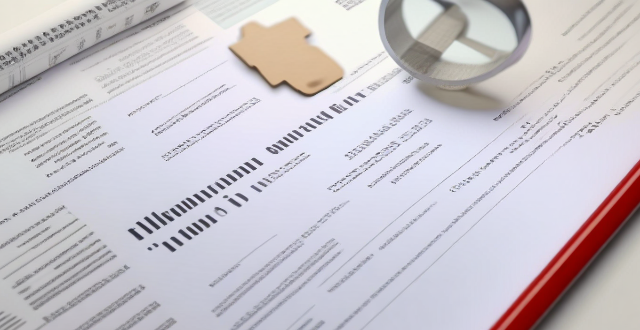
What should be included in a safety drill report ?
In summary, a safety drill report is an essential document that provides a detailed account of the findings and outcomes of a safety drill conducted in an organization or facility. It includes key elements such as header information, purpose of the drill, participation details, drill procedures, performance assessment, findings & recommendations, and conclusion. The report also includes attachments and supporting documents such as photos/videos, attendance records, and emergency contact information. By incorporating these elements into a comprehensive safety drill report, organizations can effectively evaluate their readiness to handle emergencies and continuously improve their safety protocols.

How can we measure the success of a safety drill ?
The article discusses the importance of evaluating safety drills to improve emergency response and preparedness. Key factors to consider include compliance with safety procedures, participant engagement, effectiveness of communications, availability and functionality of equipment and resources, and overall performance. By measuring the success of a safety drill, organizations can identify areas for improvement and ensure that their employees are well-prepared to handle emergency situations effectively.

What is a safety drill and why are they important ?
A safety drill is a crucial practice session that simulates emergency situations to prepare individuals and organizations for potential emergencies by practicing evacuation procedures, using safety equipment, and following established protocols. Safety drills are important for several reasons: they familiarize people with emergency procedures, identify weaknesses in current plans, ensure compliance with regulations, maintain readiness, and promote a culture of safety.

What are the key steps in performing an earthquake drill at home ?
Earthquake drills are crucial for preparing your family to react quickly and safely during an actual earthquake. Here are the key steps to perform an effective earthquake drill at home: 1. **Preparation**: Inform family members about the purpose of the drill, assign roles, identify safe places, and secure objects. 2. **Drop, Cover, and Hold On**: Drop to your hands and knees, crawl to a safe place, and hold on until the shaking stops. 3. **Relocation Drill**: Practice evacuating safely, agree on a meeting spot, and check in with all family members. 4. **After the Drill**: Review performance, update the emergency plan, and stay informed about local warning systems. 5. **Repeat**: Conduct regular earthquake drills at least once every six months to keep procedures fresh in everyone's minds.

How do safety drills help identify potential hazards in the workplace ?
Safety drills are crucial exercises to simulate and identify potential hazards in the workplace. They help highlight weak links in safety procedures, test equipment and infrastructure, enhance visibility of hazardous areas, train for unexpected circumstances, and promote a culture of safety. By conducting regular drills, organizations can reduce accidents and ensure a safer environment for employees.

Are there any specific exercises or drills for skill improvement in basketball/football/tennis, etc. ?
Topic: Skill Improvement Exercises and Drills in Basketball, Football, and Tennis Basketball: - Dribble the ball with alternating hands and in a figure 8 motion to improve ball handling skills. - Practice shooting free throws and spot shooting to enhance accuracy and consistency. - Work on lateral movement and closeout drills to improve defensive positioning and quickness. Football (Soccer): - Pass the ball against a wall and in a triangle formation to improve passing accuracy and touch. - Practice shooting at targets and receiving passes before shooting to enhance shooting accuracy and speed. - Work on marking and tackling drills to improve defensive skills and technique. Tennis: - Hit crosscourt groundstrokes and alternate forehand and backhand shots to improve accuracy and consistency. - Practice serving to targets and focusing on second serves to enhance serving reliability and placement. - Work on lateral movement and net approach drills to improve court coverage and net play.

How often should safety drills be conducted in the workplace ?
Regular safety drills are essential for maintaining a safe workplace. The frequency of these drills depends on the type of emergency and local regulations, but they should be frequent enough to keep employees prepared and confident in their ability to handle emergencies. Best practices for safety drills include creating realistic scenarios, encouraging employee involvement, gathering feedback, and documenting each drill.

Are there any specific exercises or stretches that can help improve my golf game ?
Golf improvement through specific exercises and stretches, including core strengthening exercises like plank and Russian twists, flexibility and mobility stretches such as hamstring and hip flexor stretches, and putting practice drills like the line and gate drills to enhance precision and control.
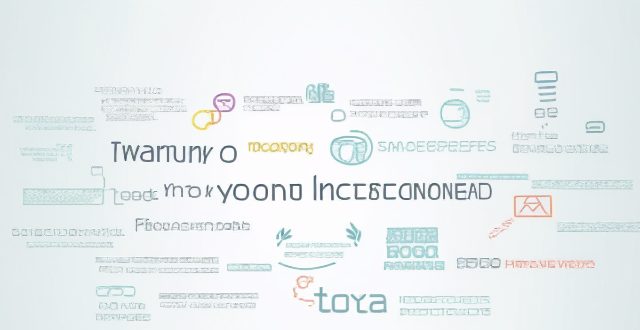
How can I protect my personal information online ?
In today's digital age, protecting your personal information online is crucial. To safeguard sensitive data, one should use strong and unique passwords, keep software and systems up-to-date, be careful with public Wi-Fi networks, be wary of phishing attacks, and limit the amount of personal information shared online. These steps can significantly reduce the risk of having personal information compromised online.

What are some best practices for protecting sensitive information on social media ?
Protecting sensitive information on social media is crucial in the digital age. To safeguard your personal data, follow these best practices: use strong passwords and a password manager; enable two-factor authentication; be cautious with personal information sharing; adjust privacy settings to restrict access; install anti-malware software; be wary of phishing scams; and always log out of accounts, especially on public devices. These steps will help ensure your online presence is secure.

What are the potential economic benefits of sharing climate information ?
The potential economic benefits of sharing climate information include improved decision making through better planning and management, risk assessment and mitigation, increased efficiency and productivity, innovation and new business opportunities, and growth of the green economy. By leveraging this information effectively, businesses, governments, and individuals can adapt to changing climatic conditions while minimizing risks and maximizing economic gains.
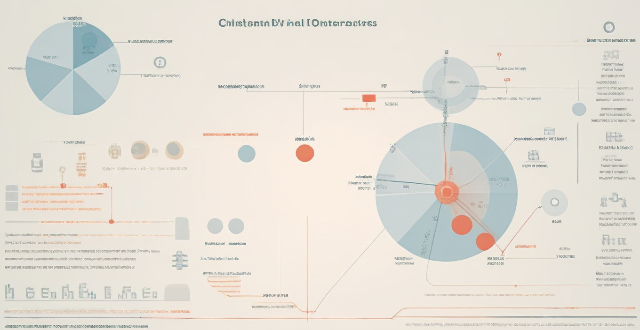
What is the importance of sharing climate information globally ?
Sharing climate information globally is crucial for understanding, predictSharing climate information globally is crucial for understanding, predictating the effects of climate change aids in modeling and forecasting future scenarios, and contributes to the development of early warning systems. Additionally, it fosters innovation, collaboration, and the formation of international agreements and policies related to climate change.

How can I avoid information overload when taking notes ?
When taking notes, it's easy to become overwhelmed by the sheer volume of information. However, there are strategies you can employ to avoid information overload and ensure that your note-taking is effective and efficient. Here are some tips: 1. Prioritize Information: Determine what information is most important and relevant to your needs. Focus on key concepts, main ideas, and supporting details that are directly related to your goals or assignment requirements. This will help you filter out extraneous information and prevent you from feeling overwhelmed. 2. Use a Systematic Approach: Develop a consistent system for organizing your notes. This could involve using headings, subheadings, bullet points, or numbered lists to break down information into manageable chunks. By doing so, you'll be able to quickly identify and locate specific pieces of information later on. 3. Take Breaks and Review: Taking regular breaks while studying or attending lectures can help reduce cognitive fatigue and improve focus. During these breaks, review your notes briefly to reinforce key concepts and identify areas that may need further clarification or elaboration. 4. Summarize and Paraphrase: Instead of trying to capture every word verbatim, summarize or paraphrase key points in your own words. This not only helps with retention but also encourages active learning as you process the information more deeply. 5. Use Visual Aids: Incorporating diagrams, charts, or other visual aids into your notes can help simplify complex information and make it easier to understand and remember. These tools can also serve as helpful reminders when reviewing your notes later on. By implementing these strategies, you can effectively manage the amount of information you encounter during note-taking sessions and avoid feeling overwhelmed or stressed out. Remember, the goal is not to capture every detail but rather to distill key concepts and retain them for future reference.
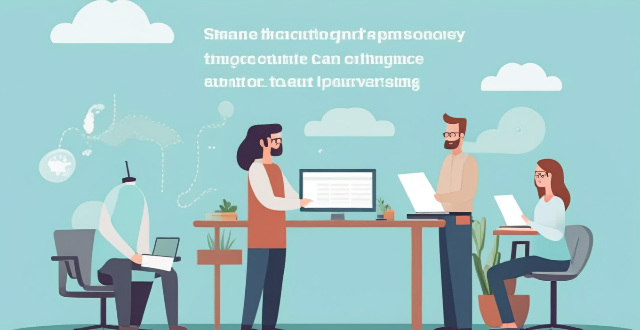
Can climate information sharing lead to better policy making ?
Climate change is a pressing issue that requires informed policymaking. Climate information sharing can improve decision-making, collaboration, and transparency in the policy process. However, challenges such as data quality, accessibility, and coordination must be addressed to ensure effective information sharing. Overcoming these challenges can lead to better policies that address climate change.

How do mind maps aid in studying and retaining information ?
Mind maps are a visual tool that aids in studying and retaining information by improving organization, enhancing creativity, promoting active learning, and facilitating recall. They provide a logical structure for organizing thoughts and connecting ideas, making complex information more accessible. Mind maps also encourage brainstorming and experimentation, leading to better learning outcomes. Additionally, they promote deeper learning through active participation and reflection on understanding. Finally, mind maps facilitate recall by providing visual cues and breaking down information into manageable chunks. Incorporating mind maps into your study routine can boost academic performance and achieve better results in your studies.

How can climate information sharing contribute to sustainable development goals ?
**How Can Climate Information Sharing Contribute to Sustainable Development Goals?** Climate information sharing plays a crucial role in achieving sustainable development goals (SDGs). This article discusses the various ways in which climate data can contribute to environmental sustainability, social equity, and economic growth. Key points include: 1. **Improving Resilience to Climate Change**: Early warning systems, adaptation planning, and infrastructure development are all enhanced by shared climate information. 2. **Supporting Sustainable Agriculture**: Farmers can use climate data for crop planning, water management, and pest and disease control. 3. **Promoting Clean Energy Solutions**: Climate information aids in renewable energy site selection, energy efficiency, and demand forecasting. 4. **Enhancing Biodiversity Conservation**: Habitat protection, species survival, and ecosystem services are all influenced by climate trends. 5. **Advancing Gender Equality**: Providing women with climate information can empower them and reduce their vulnerabilities during climate-related disasters. 6. **Fostering Partnerships for Sustainable Development**: Multi-stakeholder engagement, international cooperation, and public-private partnerships are all facilitated by climate information sharing. In conclusion, ensuring that stakeholders have access to accurate and timely climate data is essential for making progress towards a more sustainable future.

How can technology improve the process of climate information sharing ?
In this topic summary, we will discuss how technology can improve the process of climate information sharing. Technology has revolutionized the way we share and access information, including climate data. With advancements in technology, it is now easier than ever to collect, analyze, and disseminate climate information to a wide range of stakeholders. Data collection and analysis are crucial steps in the process of climate information sharing. Remote sensing, ground-based sensors, and data analysis software are some of the tools that can be used to collect and analyze climate data. These tools can help us monitor changes in climate patterns over time, identify trends and predict future climate events. Dissemination of climate information is another important step in the process. Online platforms, social media, and open data initiatives are some of the ways that climate information can be shared with researchers, policymakers, and the general public. These platforms can also offer interactive tools for visualizing and exploring the data. Collaboration and partnerships are also essential in improving the process of climate information sharing. Cloud-based collaboration tools, partnerships with tech companies, and crowdsourcing are some of the ways that researchers and stakeholders can work together on climate projects, sharing data and insights in real-time. In conclusion, technology plays a crucial role in improving the process of climate information sharing by enhancing data collection and analysis, facilitating the dissemination of climate information, and fostering collaboration among stakeholders. As technology continues to evolve, we can expect even more innovative solutions for addressing the challenges posed by climate change.

How do I integrate new information into my existing knowledge framework ?
Integrating new information into your existing knowledge framework is a crucial skill for learning and personal growth. Here are some steps you can follow to effectively incorporate new knowledge into what you already know: ## Identify Relevant Information 1. **Scan** the new information quickly to get an overview. 2. **Identify** key concepts, theories, or facts that relate to your current knowledge. 3. **Filter out** any irrelevant or redundant information. ## Connect with Existing Knowledge 1. **Activate** your prior knowledge by recalling similar concepts or experiences. 2. **Make connections** between the new information and what you already know. 3. **Create analogies** or metaphors to help relate the new information to familiar ideas. ## Evaluate and Organize Information 1. **Assess** the validity and reliability of the new information. 2. **Organize** the information in a way that makes sense within your existing framework. 3. **Categorize** the new knowledge based on its relevance and importance. ## Reflect and Consolidate 1. **Reflect** on how the new information affects your understanding or perspective. 2. **Consolidate** the new knowledge by summarizing it in your own words. 3. **Reinforce** the integration by explaining it to someone else or applying it in practice. ## Update Your Knowledge Framework 1. **Modify** your existing framework to accommodate the new information. 2. **Expand** your knowledge base by adding new categories or subtopics if necessary. 3. **Re-evaluate** the relationships between different pieces of knowledge within your framework. ## Practice and Apply 1. **Apply** the new knowledge in real-world situations to deepen your understanding. 2. **Practice** recalling and using the new information regularly. 3. **Seek feedback** from others to validate and refine your understanding further. By following these steps, you can effectively integrate new information into your existing knowledge framework, fostering continuous learning and intellectual growth.
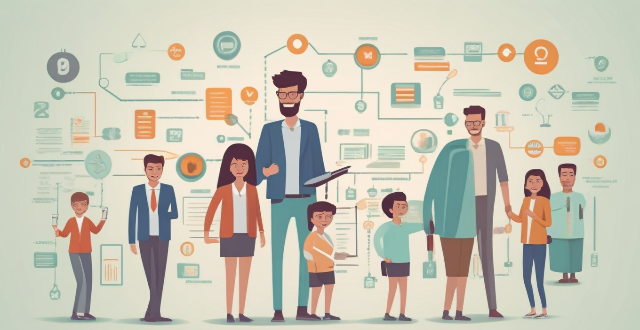
What measures do variety shows take to prevent sensitive information from being leaked ?
Variety shows take measures to prevent sensitive information leaks, such as non-disclosure agreements and confidentiality clauses in contracts. They also control access to sensitive information, implement security measures, and provide training and education for participants and crew members. These strategies help ensure the privacy and security of participants while providing entertaining content for viewers.
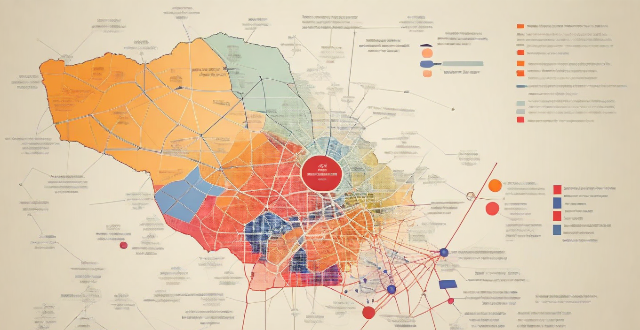
How can mind maps help in revising large amounts of information ?
Mind maps are a useful tool for organizing and revising large amounts of information. By visualizing complex information, identifying key themes and relationships, organizing thoughts, improving memory retention, and facilitating creative thinking, mind maps can help learners better understand and retain information. To use mind maps effectively, choose a central idea or theme, create branches for subtopics, add details and examples, connect related ideas, review and refine the map, and use it as a study tool.
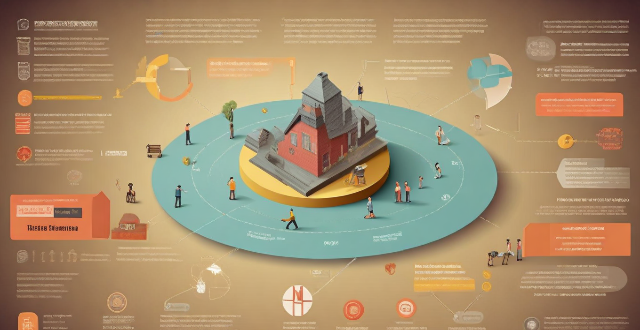
How common is it for participants to leak information about other celebrities on variety shows ?
Leaking sensitive information about fellow celebrities on variety shows is a recurring issue in the entertainment industry. The frequency of such incidents can be attributed to factors like loose lips, attempts to gain attention, misunderstanding private boundaries, and the format of the show. Consequences of leaking information include strained relationships, public backlash, and potential legal repercussions. To mitigate the issue, measures such as education and awareness, clear guidelines, editing and control, and building a safe environment can be implemented. Addressing this matter head-on can safeguard the privacy and well-being of all involved while still providing entertaining content on variety shows.

How can I prevent my personal information from being used in telecommunications fraud ?
To protect your personal information from telecommunications fraud, follow these steps: be cautious with personal information, use strong passwords and two-factor authentication, keep software and devices updated, be wary of suspicious emails and links, and educate yourself about common scams. By taking these precautions, you can reduce the risk of falling victim to telecommunications fraud.

What are some effective methods for reviewing and retaining information before an exam ?
Preparing for an exam can be a daunting task, but with the right strategies and techniques, it is possible to effectively review and retain information before the exam. Some effective methods for reviewing and retaining information before an exam include creating a study plan, using active learning techniques, practicing retrieval and recall, and staying motivated and avoiding procrastination. By following these methods, students can improve their chances of success on their exams.

What information do I need to provide to Apple for assistance in finding my lost iPhone ?
If you have lost your iPhone and need assistance from Apple, there are certain pieces of information that you will need to provide. These include your personal information, Apple ID details, lost device details, iCloud settings, and proof of purchase. Providing accurate and detailed information will help speed up the process of locating your lost device.
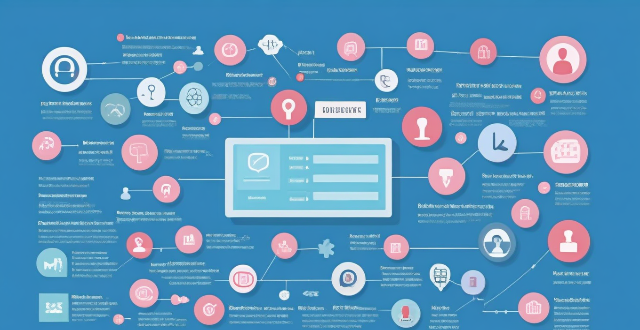
Can I control who sees my personal information on social media platforms ?
The article discusses how individuals can control who sees their personal information on social media platforms. It provides tips such as reviewing privacy settings, using lists and groups, being mindful of tagging and mentions, protecting personal information, and regularly reviewing privacy settings. By following these guidelines, users can customize their profile visibility and manage access to their personal information on social media platforms.

What are the challenges faced while sharing climate information across different countries ?
The text discusses the challenges faced while sharing climate information across different countries. The challenges include language barriers, data standardization, technical infrastructure, legal and policy frameworks, political will and cooperation, education and awareness, financial constraints, cultural differences, time zones and coordination, and quality assurance and control. Addressing these challenges through international cooperation, standardization efforts, and investment in technology and education can improve the sharing of climate information, leading to better informed decisions and more effective actions against climate change.

How can we ensure employee participation during safety drills ?
Strategies for ensuring employee participation during safety drills include clearly communicating the importance of these exercises, making them engaging and interactive, offering incentives for participation, and creating a supportive workplace culture. By implementing these strategies, employees are more likely to actively participate in safety drills, leading to improved preparedness for emergencies and a safer workplace overall.

Can you provide examples of different types of safety drills ?
Safety drills are essential exercises designed to prepare individuals and organizations for emergencies. They help ensure that everyone knows what to do in case of an unexpected event, reducing the risk of injury or loss of life. Here are some examples of different types of safety drills: 1. Fire Drills: Alerting occupants of the building by sounding alarms, guiding them to exit routes and assembly points, ensuring that all areas are cleared, conducting a headcount to account for all individuals. 2. Earthquake Drills: "Drop, Cover, and Hold On" procedure to protect oneself from falling objects, evacuating the building only if it is safe to do so, knowing how to turn off utilities like gas and water to prevent further damage. 3. Active Shooter Drills: Knowing the "Run, Hide, Fight" strategy, how to report an active shooter situation to authorities, safe evacuation techniques without drawing attention to oneself. 4. Chemical Spill or Hazmat Incident Drills: Proper use of personal protective equipment (PPE), safe evacuation procedures, reporting the incident to emergency services, decontamination procedures for those who may have been exposed. 5. Medical Emergency Drills: Basic Life Support (BLS) and CPR techniques, use of automated external defibrillators (AEDs), first aid kit usage and management of injuries until professional help arrives.

What tools do I need for basic home repairs ?
Basic Home Repairs Toolkit: Essential Tools for Common Household Tasks When it comes to basic home repairs, having the right tools is essential. Here are some of the most important tools you should have on hand for common household tasks: 1. Screwdrivers: Flathead and Phillips head screwdrivers for general use and assembling furniture. 2. Pliers: Needle-nose and slip-joint pliers for gripping and bending wires and cutting and gripping various materials. 3. Wrenches: Adjustable wrench and crescent wrench set for tightening and loosening nuts and bolts of various sizes. 4. Hammer: Claw hammer for driving nails and removing them from wood. 5. Tape Measure: Retractable tape measure for measuring distances and ensuring accuracy in cuts and installations. 6. Level: Torpedo level and carpenter's square for checking if objects are horizontally level and angles are square and true. 7. Handsaw: Hacksaw and keyhole saw for cutting through metal, plastic, or wood and making small, precise cuts in drywall or wood. 8. Drill/Driver: Cordless drill/driver with assorted drill bits and screw tips for drilling holes and driving screws into various materials. 9. Staple Gun: Manual staple gun for upholstery, fabric, and light duty fastening tasks, and electric staple gun for heavy-duty fastening tasks like installing flooring or ceiling tiles. 10. Utility Knife: Retractable utility knife for cutting open boxes, trimming materials, or scoring surfaces before snapping them apart. By having these basic tools on hand, you can tackle many common home repair projects with confidence and efficiency. Remember to keep your tools organized, clean, and properly maintained for safe and effective use.